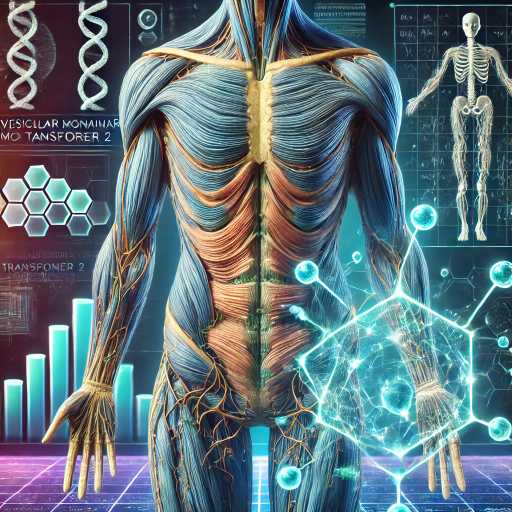Regenerating the Triumph of Three: Exploring the Potential of a Novel Medicine for the Growth of a Third Set of Teeth
Abstract:
In this scientific and medicinal research article, we delve into the fascinating possibility of humans growing a third set of teeth. Traditional knowledge suggests that humans have two sets of teeth—primary and permanent. However, recent advancements in regenerative medicine have opened up new avenues for exploring the potential of a novel medicine that could stimulate the growth of a third set of teeth. This article explores the current understanding of tooth development, the challenges associated with tooth loss, and the potential of regenerative medicine to revolutionize dental care.
Introduction:
The loss of teeth due to decay, trauma, or age-related factors has long been a challenge in dental care. While dental prosthetics and implants have provided viable solutions, they often come with limitations. The concept of humans growing a third set of teeth presents an intriguing possibility for overcoming these limitations. This article investigates the potential of a novel medicine to stimulate tooth regeneration and discusses its implications for the field of dentistry.
Tooth Development and Replacement:
To understand the potential for growing a third set of teeth, it is crucial to comprehend the intricate process of tooth development and replacement. This section provides an overview of the molecular and cellular mechanisms involved in tooth development, highlighting the key signaling pathways and factors responsible for tooth regeneration.
The Challenges of Tooth Loss:
Tooth loss can have significant physical, psychological, and functional implications for individuals. This section explores the challenges associated with tooth loss, including difficulties in chewing, speaking, and the impact on self-esteem and overall quality of life. By highlighting these challenges, we underscore the importance of developing innovative strategies for tooth replacement.
When considering the potential delivery methods for the novel medicine that stimulates tooth growth, several approaches can be explored. Here are some of the possible delivery methods that could be considered:
- Localized Injection: One approach is to directly inject the medicine into the targeted area of tooth regeneration. This method allows for precise delivery of the medicine to the desired site and can be performed by a dental professional. Localized injection ensures that the medicine reaches the tooth pulp or the surrounding dental tissues effectively.
- Scaffold-Based Delivery: Another approach involves the use of scaffolding materials impregnated or coated with the medicine. The scaffold acts as a support structure for cell growth and tissue regeneration while facilitating the controlled release of the medicine. This method provides a sustained and localized delivery of the medicine, promoting targeted tooth growth.
- Nanoparticle Delivery: Nanoparticles can serve as carriers for the medicine, enabling its controlled release and targeted delivery. The medicine can be encapsulated within biocompatible nanoparticles, which can then be administered orally, topically, or via injection. Nanoparticles can enhance the stability, bioavailability, and targeted delivery of the medicine to the tooth regeneration site.
- Gene Therapy: Gene therapy approaches can be explored for delivering the medicine to stimulate tooth growth. This method involves the transfer of specific genes or gene-modifying agents to the cells of the tooth or surrounding tissues. Gene delivery systems, such as viral vectors or non-viral vectors, can be used to introduce the therapeutic genes into the targeted cells, triggering the regeneration process.
- Topical Application: For certain cases, such as enamel regeneration or superficial tooth defects, topical application of the medicine may be considered. This could involve the use of gels, creams, or mouthwashes that contain the active ingredient. Topical application allows for easy and non-invasive delivery, but it may be limited to specific types of tooth regeneration.
It is important to note that the choice of delivery method depends on various factors, including the specific medicine, the target tissue, the stage of tooth development or regeneration, and the desired therapeutic outcome. Further research and preclinical studies are necessary to evaluate the efficacy, safety, and feasibility of these delivery methods before their translation to clinical practice.
Regenerative Medicine and Tooth Regeneration:
Recent advancements in regenerative medicine have shown promising results in tissue and organ regeneration. This section explores the application of regenerative medicine techniques, such as stem cell therapy, scaffolding materials, and growth factors, in the context of tooth regeneration. We discuss current research findings, including studies on animal models and in vitro experiments, which demonstrate the potential of regenerative medicine in stimulating tooth growth.
The Potential of a Novel Medicine:
This section introduces a novel medicine that has shown promising results in preclinical studies for stimulating the growth of a third set of teeth. We delve into the mechanism of action, highlighting the specific cellular and molecular targets of this medicine. Additionally, we discuss potential delivery methods, safety considerations, and the need for rigorous clinical trials to evaluate its efficacy and long-term effects.
Ethical Considerations:
The potential for growing a third set of teeth raises important ethical considerations. This section explores the ethical implications associated with tooth regeneration, including considerations of informed consent, equitable access to treatment, and the impact on existing dental practices. We emphasize the importance of responsible research and the involvement of ethics committees to ensure the ethical and equitable implementation of tooth regeneration therapies.
Future Directions and Implications:
The possibility of humans growing a third set of teeth holds immense potential for the field of dentistry. This section discusses future directions for research, including the optimization of regenerative medicine approaches, the development of personalized treatments, and the integration of tooth regeneration therapies into clinical practice. We also explore the broader implications of tooth regeneration for dental care and its potential impact on oral health worldwide. The exploration of novel medicine for stimulating tooth growth and the associated delivery methods is an active area of research. Scientists and researchers are continually investigating various approaches to promote tooth regeneration. While I cannot provide specific details on ongoing studies or clinical trials, I can offer some insights into the general trends and directions in this field:
- Regenerative Medicine Trials: There are ongoing clinical trials and research studies focused on regenerative medicine approaches for tooth regeneration. These studies often involve the use of stem cells, growth factors, and scaffolding materials to stimulate tooth growth. Researchers are exploring different delivery methods to optimize the efficacy and safety of these regenerative therapies.
- Nanotechnology-Based Approaches: The field of nanotechnology has shown promise in various biomedical applications, including tooth regeneration. Researchers are investigating the use of nanoparticles as delivery systems for targeted and controlled release of therapeutic agents. These studies aim to enhance the efficiency and precision of delivering the medicine to the tooth regeneration site.
- Gene Therapy Studies: Gene therapy approaches for tooth regeneration are also being explored. Researchers are investigating the use of gene delivery systems to introduce specific genes or gene-modifying agents into the tooth tissues. These studies aim to activate the regeneration process and promote the growth of functional teeth.
- Preclinical Research: Many studies are being conducted in preclinical settings, involving animal models and in vitro experiments. These studies evaluate the effectiveness and feasibility of different delivery methods for the novel medicine. Preclinical research is an essential step in understanding the mechanisms and potential of these approaches before moving to human clinical trials.
Conclusion:
The concept of humans growing a third set of teeth through regenerative medicine presents an exciting frontier in dental research. While significant progress has been made, several challenges and unanswered questions remain. Further research, clinical trials, and ethical considerations are necessary to advance this field and bring the potential of a third set of teeth closer to reality. With continued exploration and innovation, we may witness a transformative breakthrough that revolutionizes dental care and restores the triumph of three sets of teeth in humans.
Regenerating the Triumph of Three: Exploring the Potential of a Novel Medicine for the Growth of a Third Set of Teeth
Tag:
#health #care #medical #research #science #thought #precision #future #drsanjayrout #technology #change #impact
YouTube :
Social Handel’s:
LinkedIn :
https://www.linkedin.com/in/drsskro
Portfolio :
https://linktr.ee/drsskro
Facebook :
Twitter :
https://twitter.com/Drsskro
Instagram :
https://www.instagram.com/drsskro
Medium :
https://medium.com/@drsskro
Podcast :
https://anchor.fm/innovationsolution-lab
YouTube :
Quora
Blogs:
https://innovationsolutionlabs.blogspot.com
https://drsanjayrout.blogspot.com
NFT:
https://opensea.io/accounts/0xab74ab3f7c3b0ab46c82b0dc13d0b6612123d3b9
Pinterest :
https://pin.it/5Obtjq7
Behance:
Publications :
Discord
drsskro#3865
https://discord.gg/Ja5nfJQ4
Facebook page













